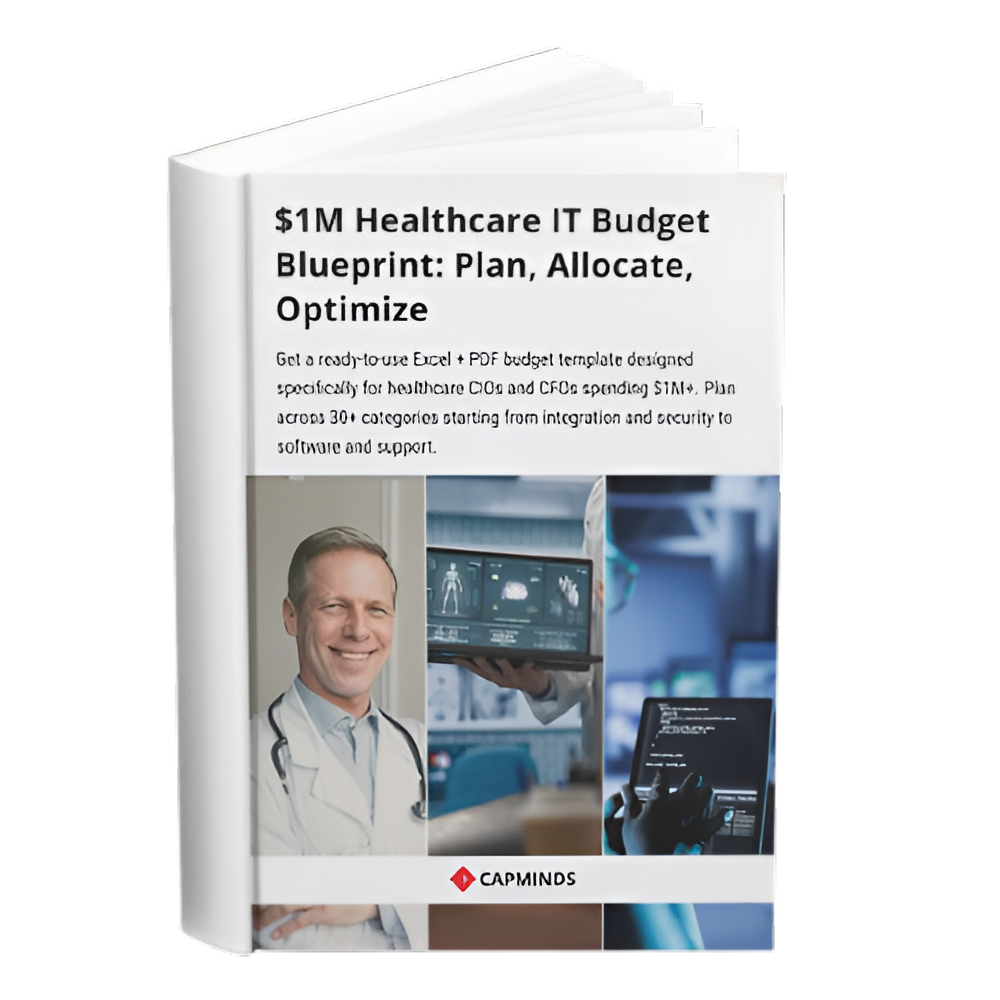How FQHCs Can Modernize Tech to Meet UDS+ and HRSA Compliance
Federally Qualified Health Centers must report core service data to HRSA’s Uniform Data System every year. The UDS Modernization Initiative aims to reduce reporting burden, improve data quality, and more fully measure the impact of the Health Center Program. In practice, UDS+ will require FQHCs to submit de-identified patient-level data from certified EHRs, using standardized fields and codes.
HRSA uses these data to assess program performance and drive quality improvement. By moving from manual, aggregate reporting to automated, detailed submissions, HRSA hopes to produce a “more complete picture of health center patients’ needs” and to illustrate health center impact better.
Modern Data Reporting and Interoperability
To achieve these goals, FQHCs must adopt modern data standards and tools. In particular, industry-wide interoperability standards like HL7 FHIR and USCDI will play a central role.
FHIR provides RESTful APIs and a common data format so that EHRs, public health registries, and HRSA’s systems can exchange data seamlessly. HRSA’s UDS+ reporting is one of the first federal programs to use the HL7 Bulk FHIR Data standard.
Health centers can automate data extraction and submission by aligning with these standards.
- For example, centers that have implemented the UDS+ FHIR spec can push patient panels, visit data, lab results, and outcomes directly to HRSA, greatly reducing manual work.
- In the long run, standardized APIs and structured data will not only streamline UDS reporting but also improve clinical decision-making.
- The more that we can standardize data sets, the more that we can all exchange information for patient care”.
Modern interoperability tools allow clinicians to view and analyze population health data in real time. In a modernized UDS+ world, EHRs will feed structured patient data directly into analytics dashboards for reporting and quality improvement.
Related: How FHIR Resources and Profiles Power Modern Health Interoperability
6 Key Steps to Modernize EHR and Data Systems
FQHCs should follow a clear roadmap to prepare for UDS+ and HRSA compliance:
Assess Current Systems
Inventory your EHR and data systems. Evaluate whether your certified EHR technology can export patient-level data and supports APIs. Identify gaps in data capture or reporting tools.
Plan Upgrades or Replacements
If needed, upgrade to the latest certified EHR version or data platform that supports UDS+ standards. Ensure the system can generate the required standardized reports.
Plan for any data migration or conversion of existing records. As HRSA advises, centers should “assess their current systems and plan for necessary upgrades or replacements” with an eye on scalability and future integration
Implement Interoperability Interfaces
Work with your vendor or IT team to enable FHIR-based connections. This may include FHIR Bulk Data APIs to pull large datasets, or direct interfaces to state and federal data warehouses.
Some centers partner with Health Center Controlled Networks or specialized consultants to help extract and transform data for reporting. In all cases, the goal is to automate data flow from the EHR into HRSA’s submission engine.
Adopt Data Standards and Templates
Configure your EHR with standardized templates and code sets. Use USCDI+ guidance to know which data elements (demographics, vitals, lab results, diagnoses, etc.) need to be captured.
Ensure common code systems (ICD-10, LOINC, SNOMED CT, CPT) are used consistently for clinical data. Modernizing may also involve implementing new data fields (e.g., Social Determinants of Health) that HRSA begins to require.
Pilot and Validate
Before the first official submission, run test exports. Validate the data against HRSA’s implementation guide or test tools. Compare results to your historic UDS reports to catch discrepancies. Refine processes until the automated reports match expected values.
Engage Partners
If your clinic network has tight IT resources, collaborate with regional support. Many FQHCs leverage HCCNs or share IT resources to meet UDS+ requirements. These partners can offer training, shared tools, and cost-effective support.
Each step should be documented in the project plans. The transition will take time, especially for smaller centers on limited budgets, so planning is critical.
Ensuring Data Quality and Structured Capture
High-quality data is the foundation of modern reporting. Under UDS+, HRSA expects “all health centers reporting on standardized metrics that are based upon codified structured data points”.
- In other words, data must be entered in discrete form, not buried in narrative notes.
- Practices should encourage the use of validated templates and checklists in the EHR.
- For example: entering diagnoses using proper ICD-10 or SNOMED codes, recording lab test orders/results with LOINC codes, and using standardized fields for vaccinations, screenings, and other measures.
- Patient encounters should be coded accurately and completely, with minimal free-text.
Data governance tools can help maintain quality. Implement regular validation reports or dashboards to spot missing or outlier values. For instance, run a monthly check on screening rates or uncontrolled chronic disease metrics. By “providing de-identified patient-level data for an apples-to-apples comparison,” UDS+ encourages consistency across centers.
In practice, this means building on existing Meaningful Use and interoperability efforts: keep code libraries up to date, provide clear documentation for data entry, and train staff on entering information in the right fields. When centers have standardized, accurate data, HRSA’s more transparent reporting will translate into better program planning and targeted interventions.
Security and HIPAA Compliance
Modernization must not compromise patient privacy or security. Any new interfaces or data stores must meet HIPAA standards. Under the HIPAA Security Rule, covered entities must implement administrative, physical, and technical safeguards for electronic protected health information.
In practical terms, this means:
- Conducting a thorough risk analysis
- Encrypting data at rest and in transit
- Enforcing strict access controls
- Maintaining audit logs
- Regularly updating security policies.
For example, before sending de-identified patient data to HRSA, ensure that the de-identification process is robust. Any cloud services or third-party tools used for reporting should have Business Associate Agreements and be HIPAA-compliant.
Remember to train staff on security best practices and update emergency contingency plans. By building in these protections by design, FQHCs can modernize IT systems without raising compliance risks.
Related: HIPAA Compliance: 5 Rules You Need to Know
Change Management and Staff Training
Finally, successful modernization relies on people. New technology is only useful if staff know how to use it. Clinics should involve clinical and administrative leaders from the start, explaining the purpose and benefits of UDS+. Provide hands-on training on any updated EHR workflows: for example, how to enter data in new fields, use new dashboards, or understand new reports.
As one expert noted, staff will need “comprehensive training not just in data entry, but in understanding how to utilize the new capabilities for improving patient care… and maintaining compliance with privacy requirements while capturing more granular information”.
Consider appointing “super-users” or champions in each department who can help colleagues and gather feedback.
Change management also means adjusting workflows. If nurses or front-desk staff take on new documentation tasks, reassign responsibilities, and update protocols, so that patient care isn’t disrupted. Communicate early and often: explain deadlines and give timelines for training.
Finally, monitor progress. Collect staff feedback after go-live, and be ready to provide extra support. When clinicians see that modern data tools ultimately save time and improve patient care, they will be more engaged in the transition.
How CapMinds IT Solutions Ensures UDS+ Compliance
To streamline the transition, CapMinds provides specialized UDS reporting services designed to help healthcare organizations stay ahead of compliance requirements.
1. EHR Integration & FHIR API Implementation
- Ensures seamless data exchange between systems.
- Reduces data inconsistencies and improves interoperability.
2. Automated UDS+ Reporting & Real-Time Dashboards
- Removes manual data entry, cutting down errors.
- Gives instant access to patient outcomes and clinical trends.
3. Compliance Audits & HRSA Submission Support
- Helps organizations avoid funding penalties.
- Provides expert guidance on data formatting and security.
4. Training & IT Support for Healthcare Professionals
- Educates staff on reporting best practices.
- Offers 24/7 tech support to troubleshoot issues.
Contact us for a free consultation on seamless UDS+ compliance and future-proof your healthcare data management today.



